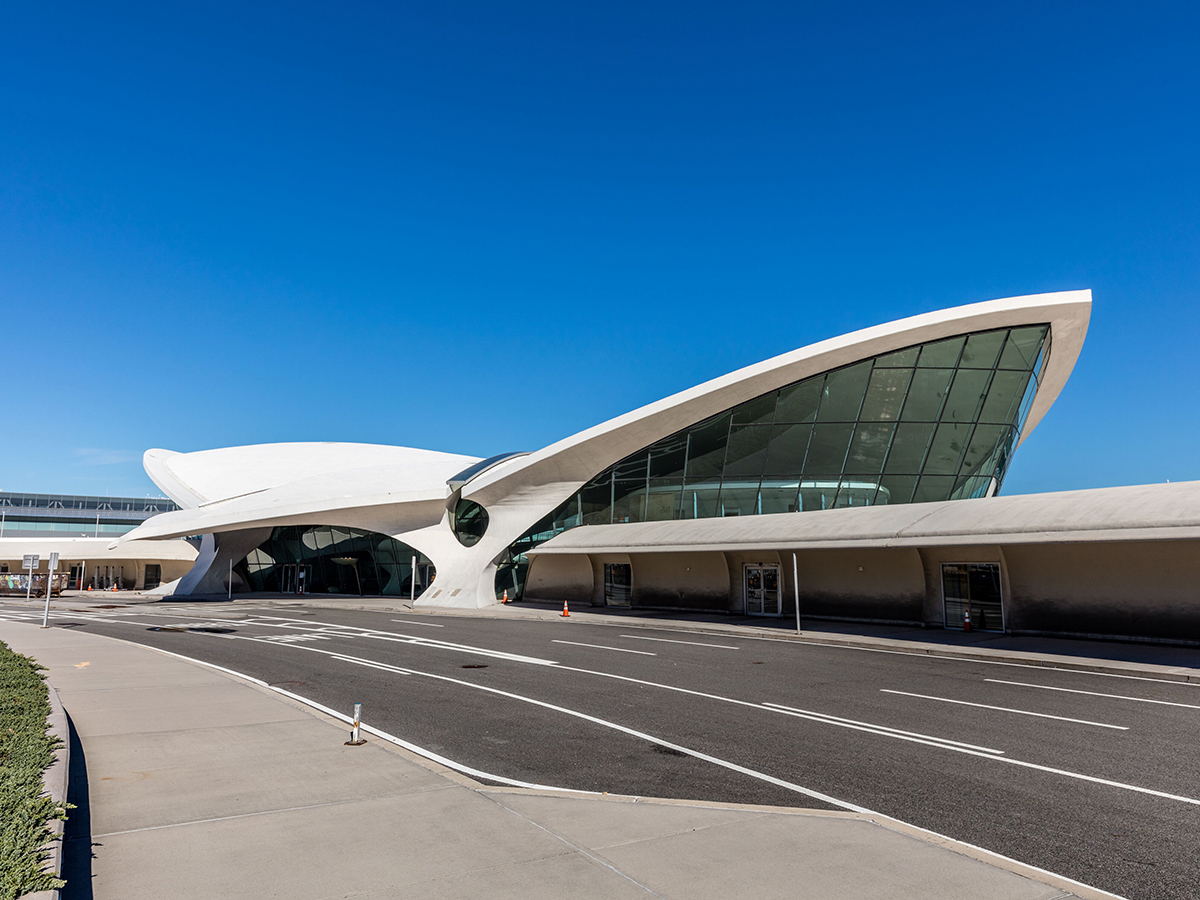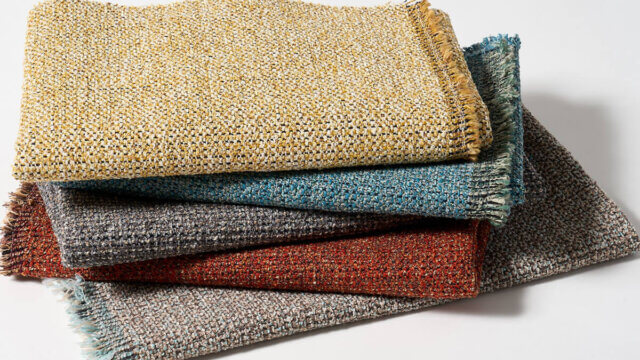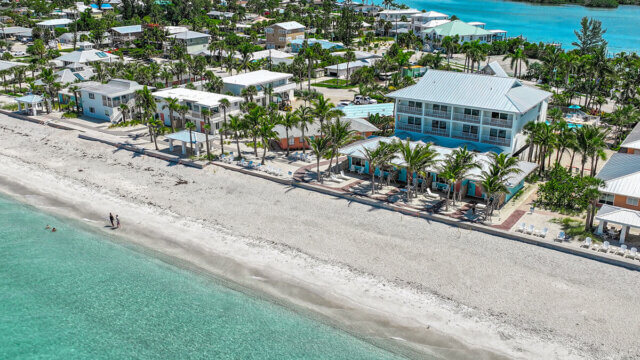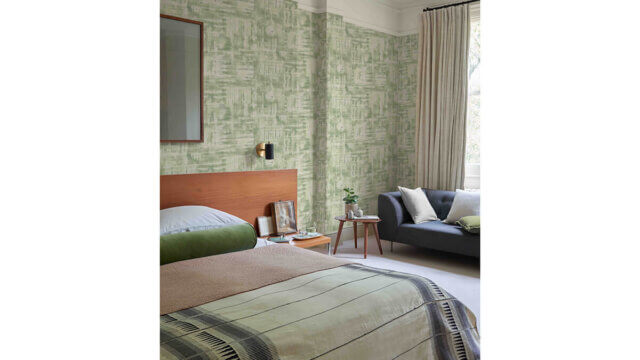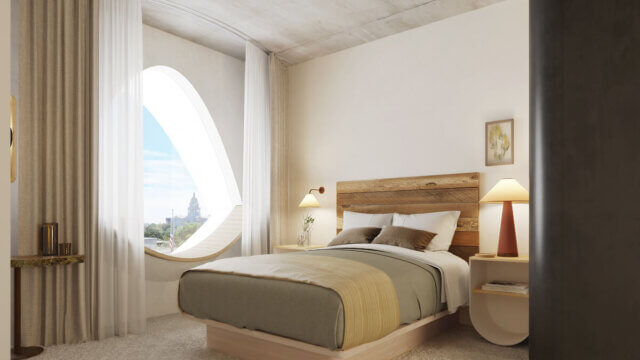Today’s real estate developers are becoming more innovative as buildings continue to be built over subways and railroads, next to elevated highways and adjacent to airport runways. MCR and Morse Development are set to open the TWA Hotel at JFK airport terminal on May 15, predicting it will be one of the world’s quietest hotels. With active runways facing the 512-room hotel and noise levels rising to 81 decibels, managing sound required a sophisticated acoustic modeling and simulation process that was led by Cerami Associates, the acoustic design consultant for the project, working with architects Beyer Blinder Belle.
“Acoustic engineers are concerned with the design, analysis and control of sound as it relates to the particular space and project. We work with architects and developers to create the intended signature sound experience. For hotels and conference centers, acoustical engineering often deals with the reduction of unwanted noise to create the quiet that guests seek,” said Christopher Peltier, PE/principal, Cerami Associates.
Noise and vibration can have a negative impact on people and must be controlled and monitored in order to produce more beneficial and productive working and living environments. Noise is a serious problem and one that can literally make you sick. According to the World Health Organization (WHO), noise is the second largest environmental cause of health problems, just after the impact of air quality.

The process for achieving the right sound attenuation for the guestrooms at the TWA hotel began by establishing an acoustic performance criteria by recording and measuring noise levels at various site locations. Cerami recorded runway noise as jets took off and taxied along the runway and local street traffic.
“We began by developing the design objective for the ‘acoustical experience’ within guestrooms and continued on studying the acoustical impact of several aspects of the building,” Peltier said. “We scoured the site, recording and measuring noise levels in all areas from the runway activity to the rooftop. The data gathered, coupled with acoustic performance data for the proposed building systems, was used to inform our acoustic modeling and simulation process where we virtually walk the team through the space and listen to the impact of various design options. Our immersive studio allows clients not only to experience the space before it is built but make significant financial decisions in the most critical phase of the project.”
In the firm’s acoustical immersion booth, the TWA project team were able to experience a modeled guestroom sound experience and select the best option for achieving the quiet they were looking for, helping a great deal with window selection.
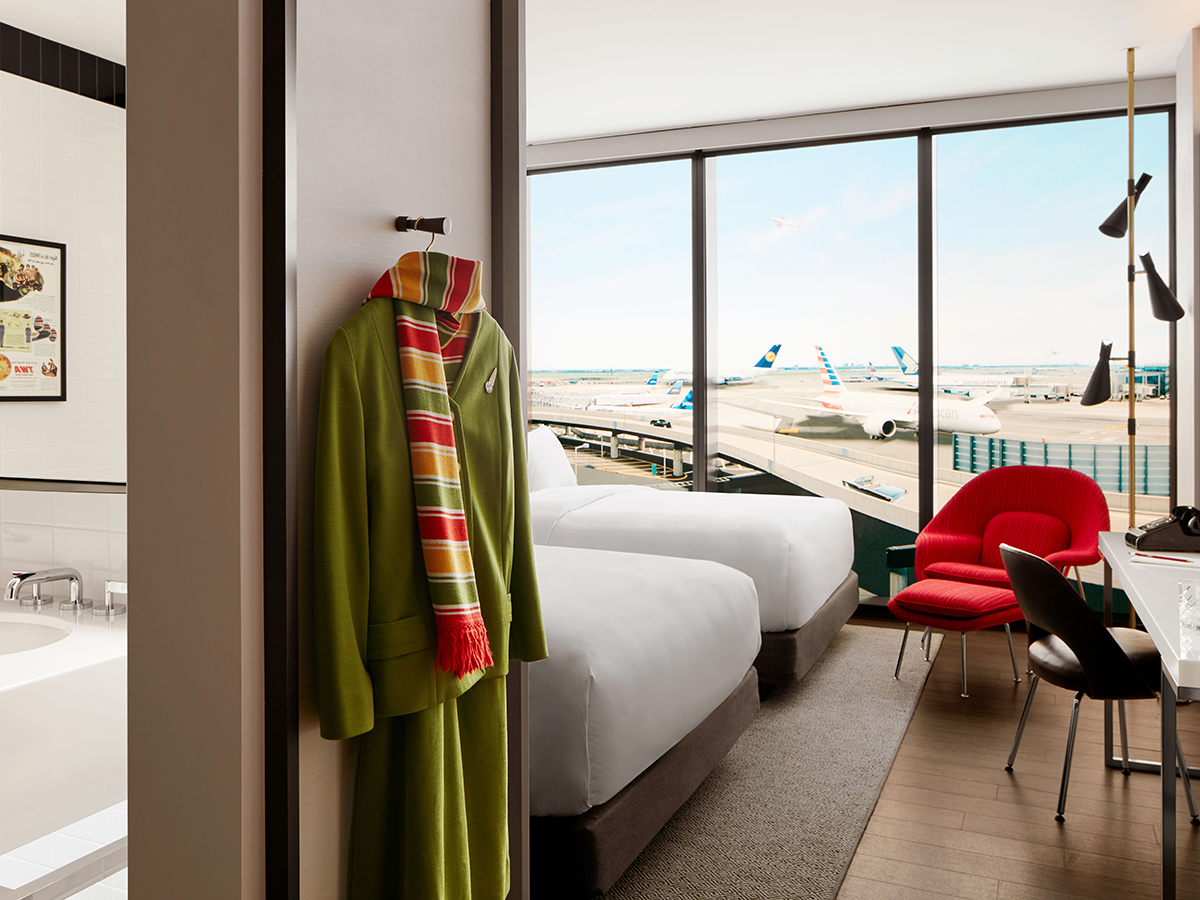
After testing several multi-pane windows, they landed on a glass curtain wall by Fabbrica—the second-thickest in the world after the wall at the U.S. Embassy in London—that is seven panes and 4½ in. thick. “Our acoustical immersion booth was an important tool in making this decision, enabling the stakeholders and design team to experience the guestrooms as they would sound with various façade systems,” Peltier said.
The glass Sound Transmission Class (STC) rating of 45 ensures the floor-to-ceiling, full-width windows reduce runway noise. This, along with specialty guestroom construction and attention to details such as acoustic treatment to the rooftop pool and the rooftop co-generation plant that powers the site, provides the signature ambiance that their partners were seeking to create.
“The TWA Hotel project stands apart because of its unique and rich history,” Peltier said. “It was an honor to be a part of the team that would bring the building back to life, after being shut down for 18 years. We had to carefully consider how we would introduce modern equipment and acoustical treatments into an iconic landmarked building while maintaining the aesthetic goals of the project.”
